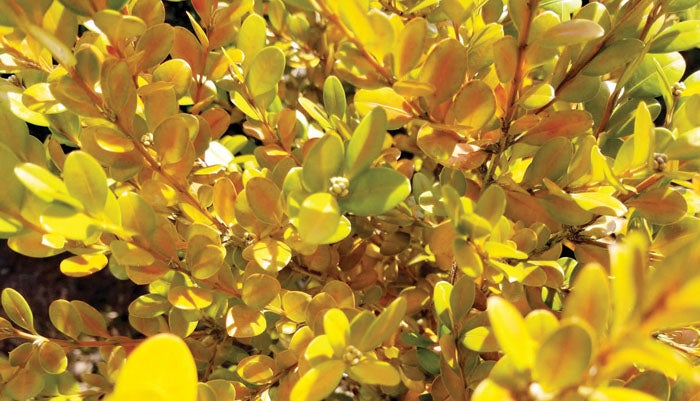Darrell Blackwelder column: Yellowing of boxwoods and evergreen shrubs
Published 12:00 am Sunday, March 14, 2021

- Boxwood with yellow-orange foliage.
Warmer and drier weather have many outdoor enthusiasts evaluating their lawns and landscapes. Lawns are starting to turn green; daffodils are blooming and flowering shrubs are showing their buds. However, some evergreens and other shrubs just don’t look good. Over the past few months, we’ve had our share of cold weather causing foliar problems. Some of our boxwoods, camellias and other evergreen shrubs have yellow-orange leaves. These and other evergreens turned yellow or orange due to mild desiccation from windy conditions and excessive sunlight as deciduous trees lost their leaves. Entire branches can also become dehydrated and die. Excessive yellowing is normally worst on the side of the plant facing the wind or sun or near a reflective surface such as white buildings. Shrubs in containers are also prone to foliar damage.
Extreme drops in night temperature after a mild wintery day can also damage leaves and tender branches. We’re not out of the woods yet. The last frost-free day in our area is April 15 and cold weather is still a certainty even if we’ve had a few above-average days.
Mulching trees and shrubs helps insulate the soil allowing moisture uptake which will help reduce leaf damage. A 3-6-inch layer of course mulch will help reduce water loss and help maintain uniform soil moisture and temperatures around roots. Mulch layers also prevent heaving and thawing which is especially important to newly planted trees and shrubs. Keep boxwoods and other shrubs healthy by applying quality fertilizers and properly irrigate during the summer growing season. Boxwoods and other yellowing shrubs will gradually turn green as summer arrives.
Darrell Blackwelder is the retired horticulture agent and director with the North Carolina Cooperative Extension Service in Rowan County. Contact him at deblackw@ncsu.edu .



